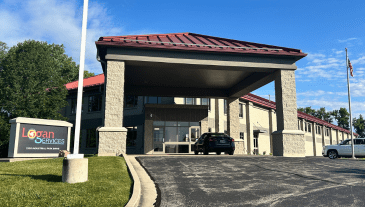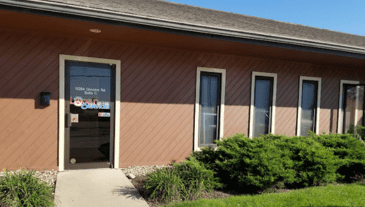A hot surface ignitor designed specifically for a furnace is an important component in many modern gas furnaces. This type of hot surface ignitor for furnace applications replaces the pilot light used in older furnaces and provides reliable, efficient ignition of the furnace burner. Installing or upgrading to a high-quality hot surface ignitor for furnace systems can improve your furnace’s overall efficiency and performance.
Compared to constantly burning pilot light, using a hot surface ignitor for reliable furnace ignition saves significant amounts of gas over time while also boosting safety. Replacing an aging or faulty hot surface ignitor for furnace startup allows the system to function as intended through smooth, instant lighting of the burner when heat is in demand. Whether installing a new hot surface ignitor for furnace equipment or simply replacing one in an existing furnace, this affordable upgrade delivers welcome benefits that both homeowners and professional HVAC technicians can appreciate.
What is a Hot Surface Ignitor?
A hot surface ignitor is an electronic device that ignites the gas burner inside a furnace. It consists of a durable ceramic heating element that can withstand extremely high temperatures exceeding 1,200°F during repeated heating cycles over many years.
When the furnace receives the signal to turn on from the thermostat, electric current begins flowing through the ignitor circuit. This causes the ceramic element to heat up rapidly within seconds. Once it reaches a temperature above 1,000°F, the hot surface ignitor starts visibly glowing bright red or orange. This glow emits the precise amount of energy needed to ignite the air-gas mixture moving into the burner assembly. The gas then lights and combusts to generate heat.
After ignition occurs, power is cut off to the hot surface ignitor circuit until the next time the furnace cycles on. This eliminates the need for a constantly-burning pilot light, which consumes gas 24/7 during cold weather months. Modern hot surface ignitors only receive brief electrical pulses during the intermittent furnace startup process, which saves energy.
To find an exact replacement hot surface ignitor to match what originally came with your specific furnace make and model, carefully check the identification label on the old ignitor itself once removed. There, you should find details such as the manufacturer name, product numbers, voltage specs, and resistance values you will need. Referencing this info makes finding the correct replacement part online much easier.
Benefits of a Hot Surface Ignitor
Upgrading an older furnace to use a hot surface ignitor instead of a pilot light offers several important benefits:
Energy Savings: Hot surface ignitors use less natural gas overall throughout the furnace’s lifetime. There is no need to keep a small flame constantly burning. This saves several hundred dollars per year.
Safety: With no open flame, hot surface ignitors eliminate the risk of flammable vapors or dust igniting inside the furnace near the burner.
Long Lifespan: Quality hot surface ignitors function reliably for over a decade without needing replacement or maintenance when properly installed. Newer ceramic ignitor materials are extremely durable.
Consistency: Unlike flickering pilot lights which can fluctuate erratically, hot surface ignitors heat up evenly to reliably ignite gas and deliver smooth furnace performance.
When to Replace Your Ignitor
Here are some signs that indicate it is time to replace an aging or malfunctioning hot surface ignitor:
- The furnace fails to start up when signaled, and there are no other obvious issues. If the ignitor cannot heat sufficiently to glow and ignite gas, the furnace cannot run.
- The ceramic element is visibly cracked or damaged. Small hairline cracks are expected over time but should not impact ignition. Larger cracks indicate replacement is needed.
- Ignition takes longer than normal once the furnace receives the signal to start. This delayed ignition hints at a weakening ignitor nearing the end of its service life.
Replacing the ignitor as a matter of maintenance every 10-15 years is recommended, as eventual failure is inevitable from ceramic deterioration over long-term repeated heating cycles.
Silicon Nitride vs. Silicon Carbide Igniters
The two main materials used to construct hot surface igniters are silicon nitride and silicon carbide. Both can withstand extremely high temperatures and repeated heating cycles within the furnace environment. However, there are some key differences.
Silicon nitride igniters are more brittle yet also more heat resistant. They can handle rapid temperature changes during furnace startup and shutdown without cracking or losing calibration. Silicon nitride igniters generally last longer, often rated for 60,000 cycles or more before needing replacement.
Silicon carbide igniters are more durable and resistant to thermal shock. They hold up well to stresses from expansion, vibration, and gas turbulence inside the furnace. SiC igniters are less expensive to produce, too. However, they have a shorter lifespan, typically around 40,000 cycles.
Most OEM furnace manufacturers use silicon nitride hot surface igniters in their newer models. Aftermarket replacement igniters are commonly silicon carbide, which suffices for most homeowners’ needs at a lower cost. Either modern silicon nitride or silicon carbide furnace ignitors represent a major upgrade over the older chrome ignitor technology.
For the best results when selecting, always match your original OEM ignitor specifications as closely as possible for proper fit and function. Upgrading to a modern hot surface ignitor from an outdated pilot light system provides better efficiency, safety, consistency, and reliability in your natural gas home furnace. Replacing older ignitors at the end of their service life — typically every 10-15 years — ensures trouble-free operation, saving time, money, and frustration.
The Logan Difference
Logan A/C & Heat is a family-owned and operated HVAC company with over 50 years of experience. All our technicians complete extensive training and adhere to detailed checklists for each installation.
What truly sets us apart is our commitment to communication, preparation, and attention to detail. Before each appointment, we verify we have all the necessary parts to avoid delays. Our experienced install managers closely oversee each job.
We take the time to explain your new equipment thoroughly, demonstrate maintenance tips, and answer all questions. Our goal is for you to feel confident in operating your HVAC system. We follow up consistently to provide helpful reminders and lifetime support.
At Logan A/C & Heat, our dedication to unbeatable craftsmanship and customer care is what makes the difference. Contact us to experience it!
Frequently Asked Questions (FAQs)
How can I test my furnace ignitor?
Use a multimeter to check ignitor resistance. Refer to your owner’s manual for the correct resistance range, but typically, between 40-100 ohms at room temperature indicates a functioning ignitor.
Why does my furnace keep turning on and off?
If an aging ignitor cannot heat up enough to properly ignite gas, it will repeatedly cycle on and off unsuccessfully trying to start before locking out. Replacing a faulty ignitor typically resolves this.




















